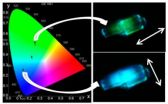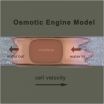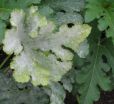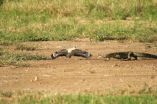(Press-News.org) Next month, following an appeal by Canada and Norway to overturn the EU ban on the import of seal products, the World Trade Organization (WTO) is expected to announce whether the 2013 decision will be upheld. In an editorial article, a University of Bristol academic, whose research on the animal welfare of the seal hunt has been used in the case, explains why the ban should stand.
The article by Dr Andy Butterworth, Senior Lecturer in Animal Sciences at the University of Bristol's School of Veterinary Sciences and an official observer of the seal hunt is published in the journal Nature.
EU legislation, in place since 2009, intended to ban the import of seal products. However, the implementation of this has been slowed pending a decision by the World Trade Organisation (WTO) on whether the ban would be permitted under WTO rules, which must reconcile contrasting statements from international agreements that are almost 70 years old. One forbids "arbitrary or unjustifiable discrimination" between countries. Another says that nations can act in a way that is "necessary to protect public morals".
Last November, the WTO agreed that the ban on marketing of seal products could be legitimately implemented on the basis of protection of 'public morals'. This was a historic decision, the first time that public morals combined with animal welfare concerns had been used to create a marketing restriction for a specific animal product.
The EU ban was introduced on the grounds of public morals, and science and scientific evidence was used to inform the judgements made on the moral questions raised by the seal hunt. The scientific evidence, by researchers including Dr Butterworth, indicated that some shot seals took a considerable period of time to die, and that some injured animals were 'unchecked' for periods of several minutes before being finally killed by clubbing. The post mortems that the researchers carried out on the ice indicated that some seals had multiple shooting, clubbing and hooking injuries — and that some had swallowed their own fresh blood —suggesting that they were alive for a period following the first contact with the hunter.
Dr Butterworth in his article argues the appeal from Canada and Norway does not challenge the "poor welfare outcomes" of the seals, which the WTO last year judged sufficient to justify the European ban. Instead, the appeal concentrates on trade issues and restrictions.
Dr Andy Butterworth said: "As a veterinary scientist, I consider the hunt to present real and significant welfare concerns. The available scientific evidence supports that opinion. But science, of course, is only one of the factors at play. If what I have witnessed being done to a young seal was done to a horse or a dog, there is little doubt that it would be labelled as cruel."
The annual Canadian commercial seal hunt is the world's largest hunt of marine mammals and by the end of the 2014 hunt, a quota of some 400,000 young seals could have been taken. The seal pups, which are only a few weeks old, are prized for their skins and for the omega-3-rich oil used in food supplements: products that are shipped around the world.
INFORMATION:
Editorial: The moral problems with the commercial seal hunt, Andy Butterworth, Nature, Volume 509, 1 May 2014.
Should the EU ban on the import of seal products stand?
2014-04-30
ELSE PRESS RELEASES FROM THIS DATE:
Prostate cancer and blood lipids share genetic links
2014-04-30
Numerous studies have suggested a relationship between cardiovascular disease risk factors and prostate cancer. A new study by researchers at the University of California, San Diego School of Medicine, with colleagues in Norway, significantly refines the association, highlighting genetic risk factors associated with low density lipoprotein (LDL) cholesterol and triglycerides as key players and identifying 17 related gene loci that make risk contributions to levels of these blood lipids and to prostate cancer
The findings, published in the April 30, 2014 online issue of ...
New hybrid material that changes colour according to the direction of the light
2014-04-30
This news release is available in Spanish. The aim with respect to hybrid materials with one organic component and another inorganic one is to combine the best attributes of each one into a single system. Labs across the world are working to develop new hybrid materials for technological applications in nanotechnologies, in particular, and these materials are already being used in lightweight materials for cars, sports equipment, in biomimetic materials, like prostheses, etc.
The hybrid material being sought after by the research group in the Department of Physical ...
Neanderthals were not inferior to modern humans, says CU-Boulder study
2014-04-30
The embargo has been lifted for the article, 'Neandertal Demise: An Archaeological Analysis of the Modern Human Superiority Complex.'
If you think Neanderthals were stupid and primitive, it's time to think again.
The widely held notion that Neanderthals were dimwitted and that their inferior intelligence allowed them to be driven to extinction by the much brighter ancestors of modern humans is not supported by scientific evidence, according to a researcher at the University of Colorado Boulder.
Neanderthals thrived in a large swath of Europe and Asia between about ...
Columbia engineers grow functional human cartilage in lab
2014-04-30
New York, NY—April 30, 2014—Researchers at Columbia Engineering announced today that they have successfully grown fully functional human cartilage in vitro from human stem cells derived from bone marrow tissue. Their study, which demonstrates new ways to better mimic the enormous complexity of tissue development, regeneration, and disease, is published in the April 28 Early Online edition of Proceedings of the National Academy of Sciences (PNAS).
"We've been able—for the first time—to generate fully functional human cartilage from mesenchymal stem cells by mimicking in ...
Throwing injuries no longer just for the pros
2014-04-30
ROSEMONT, Ill.—Baseball season is back and so are the injuries. But, elbow injuries, once seen as a problem for professional athletes, are becoming more prevalent among high school and middle school athletes due to increased play and competition at the youth level. Repetitive stress to a pitcher's ulnar collateral ligament (UCL)—an important stabilizing ligament of the elbow joint—can lead to pain and eventually to the inability to pitch and throw.
According to a literature review in the May 2014 issue of the Journal of the American Academy of Orthopaedic Surgeons (JAAOS), ...
Research finds a way to protect crops from pests and disease
2014-04-30
A team of international researchers has uncovered a mechanism by which plants are able to better defend themselves against disease-causing pathogens.
The work, led by Dr Jurriaan Ton and Dr Estrella Luna at the University of Sheffield, has identified the key receptor binding a chemical called BABA (β-aminobutyric acid) which is boosting plant immunity.
BABA has long been known for its protective effects against devastating plant diseases, such as potato blight, but has so far not been used widely in crop protection because of undesirable side effects.
"We have ...
Robots may need to include parental controls
2014-04-30
Older adults' fears that companion robots will negatively affect young people may create design challenges for developers hoping to build robots for older users, according to Penn State researchers.
Companion robots provide emotional support for users and interact with them as they, for example, play a game, or watch a movie.
Older adults reported in a study that while they were not likely to become physically and emotionally dependent on robots, they worried that young people might become too dependent on them, said T. Franklin Waddell, a doctoral candidate in mass ...
Water-based 'engine' propels tumor cells through tight spaces in the body
2014-04-30
Johns Hopkins researchers have discovered a new mechanism that explains how cancer cells spread through extremely narrow three-dimensional spaces in the body by using a propulsion system based on water and charged particles.
The finding, reported in the April 24 issue of the journal Cell, uncovers a novel method the deadly cells use to migrate through a cancer patient's body. The discovery may lead to new treatments that help keep the disease in check. The work also points to the growing importance of studying how cells behave in three dimensions, not just atop flat two-dimensional ...
Frog eggs Help MU researchers find new information on grapevine disease
2014-04-30
COLUMBIA, Mo. – Vitis vinifera are common grapevines and are the world's favorite wine-producing varietal. However, research has shown that grapevines are susceptible to powdery mildew, a plant disease, which contributes to significant crop loss for most commercial wine varietals that are cultivated each year. Now, researchers at the University of Missouri have used frog eggs to determine the cause of this disease, and have found that a specific gene in the varietal Cabernet Sauvingon, contributes to its susceptibility.
"Powdery mildew disease causes the leaves of the ...
Predators predict longevity of birds
2014-04-30
This news release is available in German. Ageing inevitably occurs both in humans and in other animals. However, life-span varies widely across species. Researchers of the Max Planck Institute for Ornithology in Seewiesen have now found a possible general mechanism explaining differences in longevity. They investigated life history data of nearly 1400 bird species and found that avian life span varies considerably across the entire Earth, and that much of this variation can be explained by the species' body mass and clutch size and by the local diversity of predator ...




